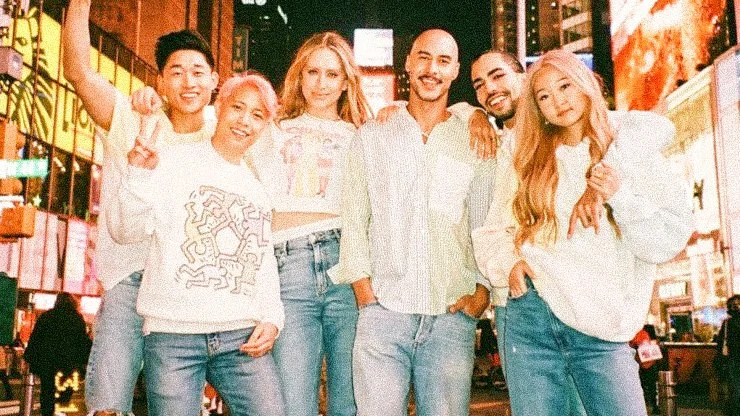Does your brand need to take a stand on social issues?
Does your brand have to take a stand?
From racial justice to human rights, it’s become commonplace for brands to take a stand. However, “taking a stand” in a divisive and reactive cultural landscape is admittedly easier said than done. While some companies are more than willing to continue to push the envelope, others are finding it harder to get it just right. Mainly, because Gen Z customers are demanding brands back up their talk with action.
Contrary to popular discourse, Gen Z values don’t necessarily mean that every brand is expected to be “woke” or “activist,” taking the correct stand on every issue. However, if brands want to lean into popular buzzwords, trends, and communities with roots in activism (sustainability, inclusivity, female empowerment, etc.), there is increased pressure to speak like an activist. Edelman found that “belief-driven buying” has two-thirds of consumers reporting purchasing or advocating for brands based on their values.
TL;DR: If brands want to be relevant with Gen Z, yes. According to Edelman, “A stunning 84 percent of young Gen Zers (14-17) say that they buy on beliefs, with a five-point jump in the past year among those 18-26 years old and 64 percent saying they’re activist via brand choice.”
Things to consider before communicating your brand’s stance
From feminism to racial justice to gun reform, before a brand makes a public statement, it should reflect on how the statement aligns with the brand’s IRL practices. If the brands’ overall values, behaviors, and messages are aligned, then making a statement is authentic. Gen Z is calling out brands who aren’t living up to their promises or political stance online – and with their purchasing power.
Furthermore, like all things in marketing, authenticity plays a huge role. Statements and donations alone are no longer enough to appease savvy Gen Zs who can and will follow up to ensure brands make good on their activist promises. As brands attempt to enter conversations around the issues that matter to their customers, it’s important that they do it authentically or risk being called out. This often happens every June during Pride month with the trend of “Rainbow Washing.”
What is Rainbow Washing?
Rainbow Washing (sometimes also referred to as “Rainbow Capitalism”) is the term given to brands who make large public gestures in support of Pride–like changing their logo to match the Pride flag, making a donation, or sponsoring a parade–that don’t match their actions the rest of the year. Not only is this unethical, but it can result in even more scrutiny of the brands’ shortcomings or problematic practices. For instance, a journalist at AdWeek put together a snapshot of brands who are publicly sponsoring Pride campaigns while privately sponsoring anti-LGBTQ+ legislation.
How can a brand be an ally?
To exemplify how brands can be allies, we wanted to analyze some excellent examples from this most recent Pride month. Absolut, Abercrombie, and Aesop were able to transcend Rainbow Washing to meaningfully celebrate and commemorate Pride this year. Here are 3 things you can learn from them:
1. Start with your strengths like Absolut’s Out & Open Campaign
WHAT IT WAS: One of the most lauded brands celebrating Pride is Absolut Vodka. For their Out & Open campaign Absolut tapped stars like Bowen Yang “To highlight the irreplaceable impact of LGBTQ+ bars and restaurants, and bring awareness to their plight as they face a steady decline in the industry by partnering with the National LGBT Chamber of Commerce (NGLCC).” The brand is being an effective ally by using its pull with celebs to push for inclusive spaces for the community.
WHY WE LIKED IT: Not only was this campaign just the latest in decades-long allyship from Absolut, they chose a cause that also authentically aligned with the brand.
TAKEAWAY FOR YOUR BRAND: Allyship is about looking inward at how your brand can leverage its strengths, networks, and community to support the cause.
2. Be Proud year-round like Abercrombie
WHAT IT WAS: The teen-favorite brand has co-created a collection with The Trevor Project, “The world’s largest suicide prevention and mental health organization for lesbian, gay, bisexual, transgender, queer and questioning (LGBTQ) young people.” The collection is available not only year-round but also for both the Abercrombie & Fitch and Abercrombie kids brands.
WHY WE LIKED IT: Too often, LGBTQ+ issues and initiatives are relegated to Pride month and only Pride month. Abercrombie is one of the few brands that make its Pride collection available year-round.
TAKEAWAY FOR YOUR BRAND: It’s more important than ever that a brand’s stated stance match their policies and practices. Allyship should be a year-round effort.
3. Pass the mic like Aesop:
WHAT IT WAS: Aesop, known for its luxurious soaps, lent some of its stores’ shelf space to LGBTQ+ storytelling. The brand curated 50 stories (to commemorate 50 years of Pride) to create the Aesop Queer Library complete with complimentary copies in-store. The brand also chose to spotlight Travis Alabanza, Sharan Dhaliwal, and Paul Mendez, three queer writers of color.
WHY WE LIKED IT: Aesop generously chose to share space (literally and figuratively) by lending their platform to elevate marginalized voices.
TAKEAWAY FOR YOUR BRAND: When it comes to taking a stand on the issues, lean into altruism and don’t worry about the bottom line.




